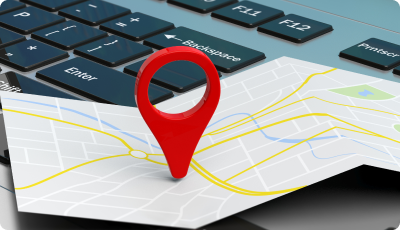Introduction
In the realm of digital marketing analytics, Google Analytics stands as a powerful tool for webmasters and marketers alike. It provides a wealth of data and metrics that help understand user behavior, site performance, and the overall effectiveness of your online presence.
Bounce Rate in Google Analytics is a vital indicator of how engaging and user-friendly your website is. It measures the percentage of single-page sessions where visitors land on a page and leave without interacting further.
A high Google Analytics bounce rate could signal issues with content relevance, user experience, or technical problems. Understanding and optimizing the bounce rate GA4 (Google Analytics 4) is crucial for improving your website’s performance.
By analyzing user behavior, implementing user-centric strategies, and refining content, you can reduce the bounce rate in Google Analytics and enhance the overall effectiveness of your online presence.
In this article, we will share valuable information about the bounce rate in Google Analytics, its impact, and tips for optimizing user engagement.

What Is Bounce Rate In Google Analytics?
The bounce rate is a crucial metric that indicates the percentage of single-page sessions on your website. This metric is paramount in Google Analytics bounce rate analysis as it represents the number of visitors who land on a page and immediately exit your site without any interaction, like clicking links or exploring other content.
A high bounce rate signifies that your website might not meet visitor expectations or that the content isn’t engaging enough to encourage further exploration.
However, an intriguing scenario arises when you encounter a 0% bounce rate in your Google Analytics or bounce rate GA4 reports. This could imply an unusually high level of engagement, but it often warrants a closer investigation for potential anomalies or tracking issues in your analytics setup.
Understanding and analyzing the bounce rate through Google Analytics or the newer GA4 platform is essential for optimizing your website’s user experience and content strategy.
Understanding A 0% Bounce Rate: Is It Good Or Bad?
When you log into your Google Analytics dashboard and notice a 0% bounce rate for a specific page or your entire website, it’s natural to feel a sense of accomplishment. After all, a 0% bounce rate in Google Analytics indicates that every visitor is interacting with your website in some way, navigating through multiple pages, and fully engaging with your content. But is that always the case?
In Google Analytics (GA4), the bounce rate is an imperative metric to measure the percentage of visitors who land on your site and do nothing on the page they entered.
Thus, a 0% bounce rate might suggest perfect user engagement. However, in the context of bounce rate GA4, this shallow figure could also indicate issues such as incorrect Google Analytics setup, tracking errors, or even a glitch in data reporting. Therefore, while a 0% bounce rate can seem ideal, it’s essential to ensure your Google Analytics data is accurate and reliable.
Understanding the Google Analytics bounce rate is vital in analyzing your website’s performance. The bounce rate calculation in Google Analytics involves assessing the number of single-page sessions divided by the total sessions on your site.
This metric helps determine the percentage of visitors who enter the site and then leave (“bounce”) without triggering any other requests to the Analytics server during that session.
Hence, a 0% bounce rate in Google Analytics may raise questions about the accuracy of bounce rate calculation, necessitating a thorough examination of your Google Analytics setup and data integrity.

The Impact Of A 0% Bounce Rate: What To Know
A 0% bounce rate in Google Analytics is highly unusual and often misleading. It typically indicates tracking errors or setup issues rather than perfect user engagement.
This figure requires thorough investigation to ensure accurate data, which can significantly impact your understanding of website performance and visitor behavior. Let us walk you through the impact of a 0% bounce rate in detail.
Technical Factors vs. User Engagement
It’s important to recognize that a 0% bounce rate isn’t solely an indicator of outstanding user engagement, especially when considering the bounce rate in Google Analytics 4 (GA4). In some cases, technical factors can lead to a 0% bounce rate in GA4.
For instance, if your website uses event tracking to monitor user interactions, such as clicking on buttons or submitting forms, Google Analytics may interpret these actions as preventing a bounce. Understanding the nuances of bounce rate in GA4 is paramount for accurately assessing user engagement on your website.
Landing Pages vs. Exit Pages
While a 0% bounce rate on a landing page measured in Google Analytics 4 (GA4) is often seen as a positive sign, the same rate on an exit page could indicate issues.
In GA4, a bounce rate of 0% on critical pages like “Contact Us” or “Checkout” might imply that users are unable to complete desired actions or are encountering difficulties.
Hence, it’s important to understand the nuances of bounce rate in GA4, as it differs from the traditional bounce rate metric. A 0% rate could also suggest that the tracking setup might be flawed, capturing user interactions incorrectly.
Therefore, it’s pivotal to analyze user flow and interaction data in GA4 to ensure an accurate interpretation of the bounce rate and to identify any underlying problems on the website.
Content Quality And Relevance
A 0% bounce rate in GA4 can indeed signify that users find your content engaging and relevant. However, it’s essential to analyze the context. Are users truly engaging with the content, or are they quickly exiting because they found what they were looking for? Consider the user intent behind the visit.
In GA4, a low bounce rate often indicates effective content alignment with user needs. However, it’s vital to assess other metrics like session duration and page views to understand user engagement and content effectiveness fully.
Mobile vs. Desktop
Bounce rates can exhibit notable differences between mobile and desktop users. The bounce rate calculation involves measuring the percentage of visitors who leave a site after viewing only one page.
A 0% bounce rate on mobile devices might be more common, partly due to the constrained screen space, which necessitates scrolling or clicking for additional information.
This contrasts with desktop users who have a broader view and easier navigation. The bounce rate calculation considers user engagement, time spent on the site, and the number of pages visited.
Understanding these patterns is essential for optimizing website design and content strategy to cater to the specific needs and behaviors of different device users.
Conversion Rate vs. Bounce Rate
While a low bounce rate is favorable, it’s not the sole measure of success. Analyzing “Bounce Rate in Google Analytics” alongside conversion rate data provides a more comprehensive picture of your website’s performance.
This approach is imperative as conversion metrics reveal whether users are taking desired actions, such as making purchases or submitting contact forms.
In Google Analytics, bounce rate offers insights into user engagement, but combining it with conversion data helps assess if the site effectively drives key user actions, balancing traffic quality with business goals.
Strategies To Optimize User Engagement And Reducing Bounce Rate
Now that we’ve discussed the nuances of a 0% bounce rate let’s explore strategies to optimize user engagement and reduce bounce rates effectively. For instance, by focusing on user-centric design, creating compelling content, and implementing responsive web design, you can enhance the overall user experience and encourage visitors to explore your website further.
Engaging users with interactive elements and clear calls-to-action can also contribute to lower bounce rates and increased conversions. The following are the compelling strategies we suggest considering.
Content Relevance
Align your content with user intent and expectations. High-quality, informative, and engaging content, analyzed through metrics like the Google Analytics bounce rate, is more likely to keep users on your site. Monitor these metrics to understand how content resonates with your audience.
Clear Navigation
Streamline website navigation to make it plain sailing for users to find what they’re looking for. Clear menus, intuitive links, and well-structured pages, as reflected in the bounce rate in GA4 (Google Analytics 4), can significantly enhance the user experience.
Mobile Optimization
With the increasing number of mobile users, prioritize mobile responsiveness. A seamless mobile experience, evident in mobile-specific bounce rate metrics in Google Analytics, can help reduce bounce rates on handheld devices.
Page Load Speed
Slow-loading pages are a major contributor to higher bounce rates. Optimize your website’s performance by minimizing page load times. Use Google Analytics to track how page speed affects your bounce rate.
A/B Testing
Conduct A/B tests to assess the impact of different layouts, content, and calls-to-action on bounce rates. Data-driven insights, including bounce rate calculation in Google Analytics, can guide optimization efforts, helping you identify the most effective strategies for your website.
By integrating these strategies with detailed analytics from tools like Google Analytics and GA4, you can create a more engaging user experience, effectively reducing bounce rates and amplifying overall website performance.
Conclusion
After reading the blog, you will have earned tremendous insights into the bounce rate world and would have understood that a 0% bounce rate in Google Analytics isn’t necessarily a straightforward indicator of success.
It’s necessary to consider various factors, including technical aspects, user intent, and content relevance. You can reduce bounce rates and enhance your website’s overall performance by focusing on user engagement and employing optimization strategies.
Note: A low bounce rate is a positive sign, it’s just one piece of the larger analytics puzzle that shapes your online success.
In your journey to understand and optimize the bounce rate, it’s valuable to partner with experts who can provide guidance and support. For instance, ZealousWeb, a Full-Service Web and Digital Marketing Agency, specializes in helping businesses navigate the intricate landscape of web analytics, user engagement, and SEO optimization.
If you have any questions or need a consultation about Google Analytics or GA4, feel free to contact us at hello@zealousweb.com












